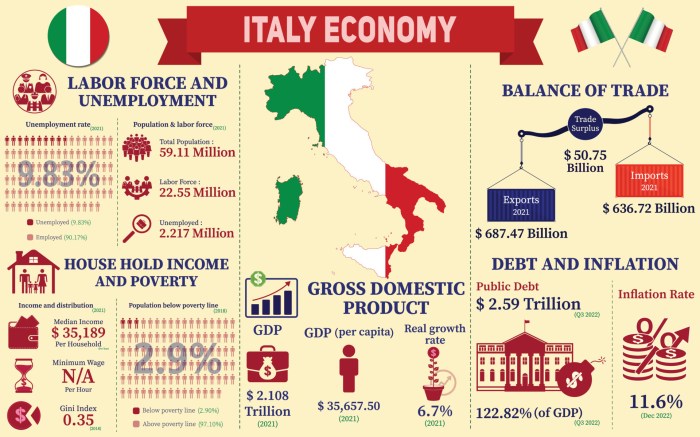The macro economy today 16th edition – The Macro Economy Today, 16th Edition, offers a comprehensive exploration of the intricate forces shaping the global economic landscape. This authoritative guide analyzes key indicators, global influences, government policies, industry trends, and future prospects, providing a nuanced understanding of the macroeconomic environment.
Delving into the latest economic data and expert insights, this edition unravels the complex interplay between domestic and international factors, empowering readers to make informed decisions in an ever-changing economic climate.
The Current State of the Macro Economy: The Macro Economy Today 16th Edition
The macro economy has been experiencing a period of significant change and uncertainty in recent years. The COVID-19 pandemic has had a profound impact on global economic activity, leading to sharp declines in output, employment, and trade. However, the economy has begun to recover in many countries, and some key indicators are now showing signs of improvement.
One of the most important indicators of economic health is GDP (gross domestic product). GDP measures the total value of goods and services produced in an economy over a given period of time. In the United States, GDP grew at an annual rate of 6.9% in the fourth quarter of 2021, the fastest pace in decades.
This growth was driven by strong consumer spending and business investment.
Another key indicator of economic health is unemployment. The unemployment rate measures the percentage of the labor force that is unemployed. In the United States, the unemployment rate fell to 3.6% in March 2022, the lowest level since the COVID-19 pandemic began.
This decline in unemployment suggests that the economy is recovering and that businesses are hiring.
Inflation is another important indicator of economic health. Inflation measures the rate at which prices for goods and services are rising. In the United States, inflation has been rising in recent months, reaching a 40-year high of 7.9% in February 2022. This increase in inflation is due to a number of factors, including supply chain disruptions, rising energy prices, and strong consumer demand.
Global Economic Factors
The global economy is interconnected, and events in one country can have a ripple effect on other countries. The COVID-19 pandemic is a good example of this. The pandemic has caused disruptions to global supply chains, leading to shortages of goods and higher prices.
The pandemic has also led to a decline in global trade, as countries have closed their borders and imposed travel restrictions.
Geopolitical tensions are another factor that can impact the global economy. The ongoing war in Ukraine is causing uncertainty in the global energy market and leading to higher prices for oil and gas. This is having a negative impact on economic growth in many countries.
Government Policies
Government policies can have a significant impact on the macro economy. Fiscal policy refers to the government’s use of taxes and spending to influence economic activity. Monetary policy refers to the government’s use of interest rates and other tools to influence the money supply.
In response to the COVID-19 pandemic, many governments have implemented expansionary fiscal policies. This has involved increasing government spending and cutting taxes in order to stimulate economic activity. Expansionary fiscal policies can help to boost GDP and employment, but they can also lead to higher levels of government debt.
Monetary policy has also been used to support the economy during the pandemic. Central banks have lowered interest rates to make it cheaper for businesses to borrow money and invest. This has helped to boost economic growth, but it can also lead to higher levels of inflation.
Industry Trends
Key industry trends can also have a significant impact on the macro economy. Technological advancements are one of the most important industry trends of our time. Technological advancements are leading to increased productivity, innovation, and economic growth. However, they can also lead to job losses and income inequality.
Globalization is another important industry trend. Globalization is the process of increasing interconnectedness between countries. Globalization has led to increased trade and investment, which has helped to boost economic growth. However, it can also lead to job losses and income inequality.
Demographic shifts are another important industry trend. Demographic shifts are changes in the age structure of a population. Demographic shifts can impact the labor force, the demand for goods and services, and the overall health of the economy.
Future Outlook

The future outlook for the macro economy is uncertain. The COVID-19 pandemic is still ongoing, and geopolitical tensions are rising. These factors could continue to weigh on economic growth. However, the economy has shown signs of resilience in recent months, and there are reasons to be optimistic about the future.
One reason for optimism is the strong labor market. The unemployment rate is low, and wages are rising. This suggests that consumers have money to spend, which could help to boost economic growth.
Another reason for optimism is the progress that has been made in the fight against the COVID-19 pandemic. Vaccines are now widely available, and the number of new cases is declining. This suggests that the economy could continue to recover in the coming months.
Essential Questionnaire
What are the key macroeconomic indicators?
Key macroeconomic indicators include Gross Domestic Product (GDP), unemployment rate, inflation rate, consumer price index (CPI), and producer price index (PPI).
How do global events impact the macro economy?
Global events such as pandemics, geopolitical tensions, and trade disputes can significantly influence economic growth, trade flows, and investment patterns.
What is the role of government policies in shaping the macro economy?
Government policies, such as fiscal and monetary measures, can influence economic activity, inflation, and employment levels.
How are industry trends shaping the macro economy?
Industry trends like technological advancements, globalization, and demographic shifts can impact productivity, innovation, and economic growth.
What is the future outlook for the macro economy?
The future outlook for the macro economy depends on various factors, including global economic conditions, government policies, and technological advancements.
